从零学Netty(三)AIO通信(多人聊天室)
AIO概念
异步非阻塞IO,全称AsynchronousI/O,JDK1.7升级了NIO类库,升级后的NIO类库被称为NIO2.0,也就是我们要介绍的AIO
NIO2.0引入了新的异步通道的概念,并提供了异步文件通道和异步套接字通道的实现。异步通道提供两种方式获取操作结果
它不需要通过多路复用器(Selector)对注册的通道进行轮询操作即可实现异步读写,从而简化了NIO的编程模型
原理图
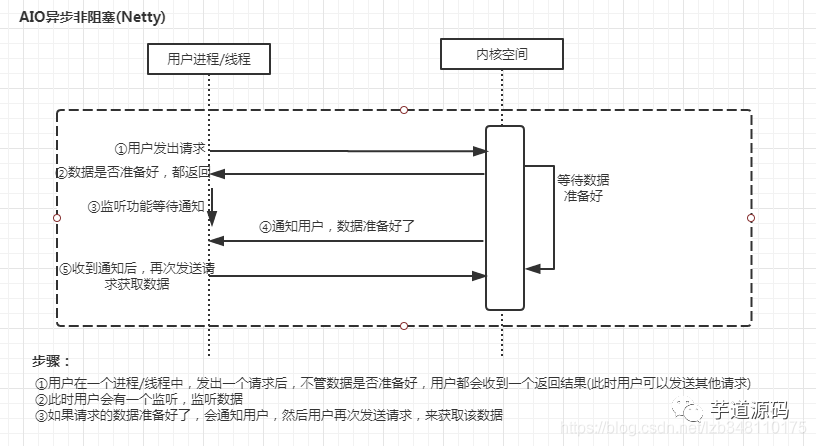
图片来源:https://mp.weixin.qq.com/s/CRd3-vRD7xwoexqv7xyHRw
实例demo
服务端代码
/*** aio服务端** @author LionLi*/public class AioServer {public void startListen(int port) throws Exception {ExecutorService executorService = Executors.newCachedThreadPool();AsynchronousChannelGroup channelGroup = AsynchronousChannelGroup.withThreadPool(executorService);AsynchronousServerSocketChannel serverSocketChannel = AsynchronousServerSocketChannel.open(channelGroup);serverSocketChannel.bind(new InetSocketAddress(port));// 接收并处理客户端请求serverSocketChannel.accept(null, new ServerHandler(serverSocketChannel));}public static void main(String[] args) throws Exception {AioServer aioServer = new AioServer();aioServer.startListen(8088);System.out.println("服务端正在监听.........");// 阻塞代码System.in.read();}}
服务端消息处理器代码
/*** aio服务端消息处理器** @author LionLi*/public class ServerHandler implements CompletionHandler<AsynchronousSocketChannel, Object> {// 客户端通道列表private static final List<AsynchronousSocketChannel> CHANNEL_LIST = new ArrayList<>();private final AsynchronousServerSocketChannel serverSocketChannel;public ServerHandler(AsynchronousServerSocketChannel serverSocketChannel) {this.serverSocketChannel = serverSocketChannel;}/*** 当实际IO操作完成时触发*/@Overridepublic void completed(AsynchronousSocketChannel result, Object attachment) {ByteBuffer byteBuffer = ByteBuffer.allocate(1024);CHANNEL_LIST.add(result);serverSocketChannel.accept(null, this);result.read(byteBuffer, null, new CompletionHandler<Integer, Object>() {@Overridepublic void completed(Integer result1, Object attachment) {byteBuffer.flip();// 获取消息输出String msg = StandardCharsets.UTF_8.decode(byteBuffer).toString();System.out.println("转发消息: " + msg);// 分发消息try {for (AsynchronousSocketChannel asc : CHANNEL_LIST) {if (asc.isOpen()) {asc.write(ByteBuffer.wrap(msg.getBytes(StandardCharsets.UTF_8))).get();}}} catch (Exception e) {e.printStackTrace();}byteBuffer.clear();result.read(byteBuffer, null, this);}@Overridepublic void failed(Throwable exc, Object attachment) {// 从该Channel中读取数据失败,将该Channel删除CHANNEL_LIST.remove(result);}});}@Overridepublic void failed(Throwable exc, Object attachment) {exc.printStackTrace();}}
客户端代码
/*** aio客户端** @author LionLi*/public class AioClient {private final ExecutorService executorService;// 连接通道private AsynchronousSocketChannel socketChannel;private AsynchronousChannelGroup channelGroup;private final String username;public AioClient(String ip, int port, String username) {this.username = username;ByteBuffer byteBuffer = ByteBuffer.allocate(1024);executorService = Executors.newCachedThreadPool();try {channelGroup = AsynchronousChannelGroup.withThreadPool(executorService);socketChannel = AsynchronousSocketChannel.open(channelGroup);// 连接到远程服务器socketChannel.connect(new InetSocketAddress(ip, port)).get();send("上线了");byteBuffer.clear();socketChannel.read(byteBuffer, null, new CompletionHandler<Integer, Object>() {@Overridepublic void completed(Integer result, Object attachment) {byteBuffer.flip();// 将buff中的内容转换成字符串String content = StandardCharsets.UTF_8.decode(byteBuffer).toString();// 显示从服务器端读取的数据System.out.println(content);byteBuffer.clear();socketChannel.read(byteBuffer, null, this);}@Overridepublic void failed(Throwable exc, Object attachment) {exc.printStackTrace();}});} catch (Exception e) {e.printStackTrace();}}public void send(String msg) {msg = username + ":" + msg;try {socketChannel.write(ByteBuffer.wrap(msg.getBytes(StandardCharsets.UTF_8))).get();} catch (InterruptedException | ExecutionException e) {e.printStackTrace();}}public static void main(String[] args) {System.out.print("请输入用户名: ");Scanner scanner = new Scanner(System.in);String username = scanner.nextLine();AioClient client = new AioClient("localhost", 8088, username);while (true) {// 发送数据到服务端String msg = scanner.nextLine();if (msg.equals("exit")) {client.send("下线了");client.channelGroup.shutdown();client.executorService.shutdown();break;} else {client.send(msg);}}}}
测试
- 场景如下:
- 启动服务端
- 顺序启动客户端 用户ABC 并输入用户名
- 分别打招呼
倒序退出客户端 用户ABC

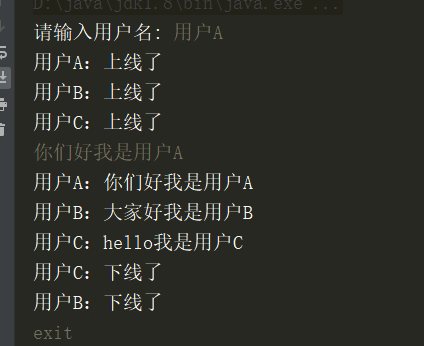
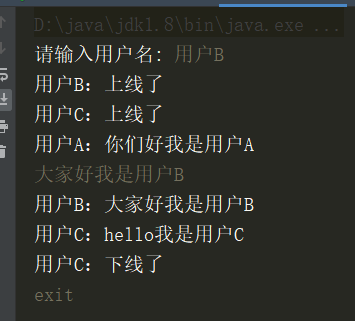
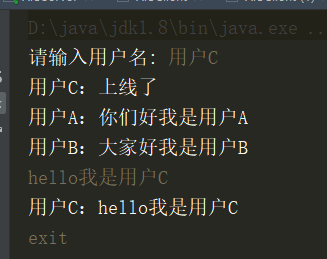
项目已上传到gitee
地址: netty-demo
如果帮到您了,请帮忙点个star


























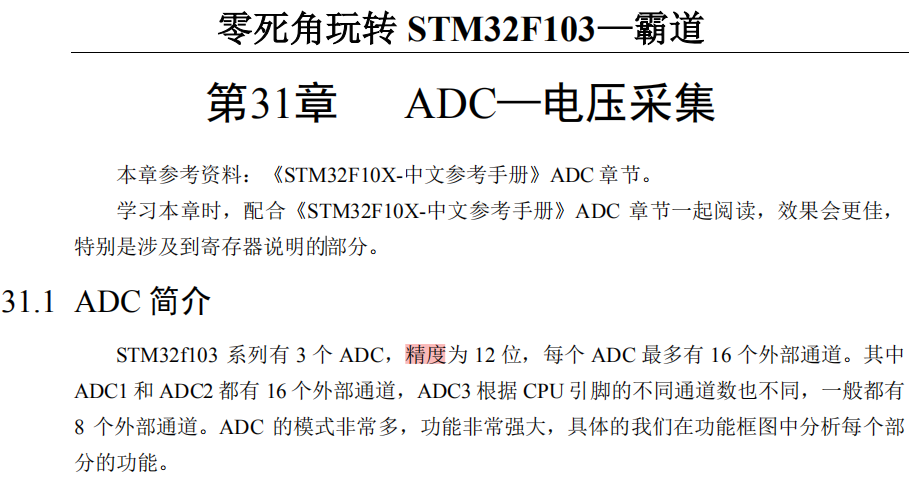
![[Leetcode][第889题][JAVA][根据前序和后序遍历构造二叉树][分治][递归] [Leetcode][第889题][JAVA][根据前序和后序遍历构造二叉树][分治][递归]](https://image.dandelioncloud.cn/images/20221123/d21b47c447f743169046f5ea4342b0c6.png)
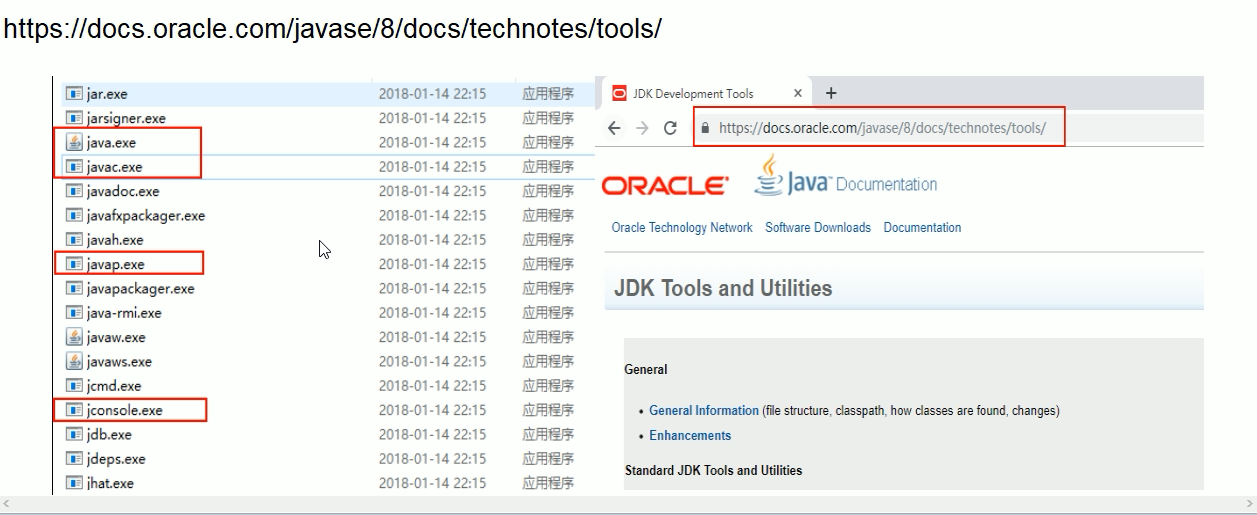
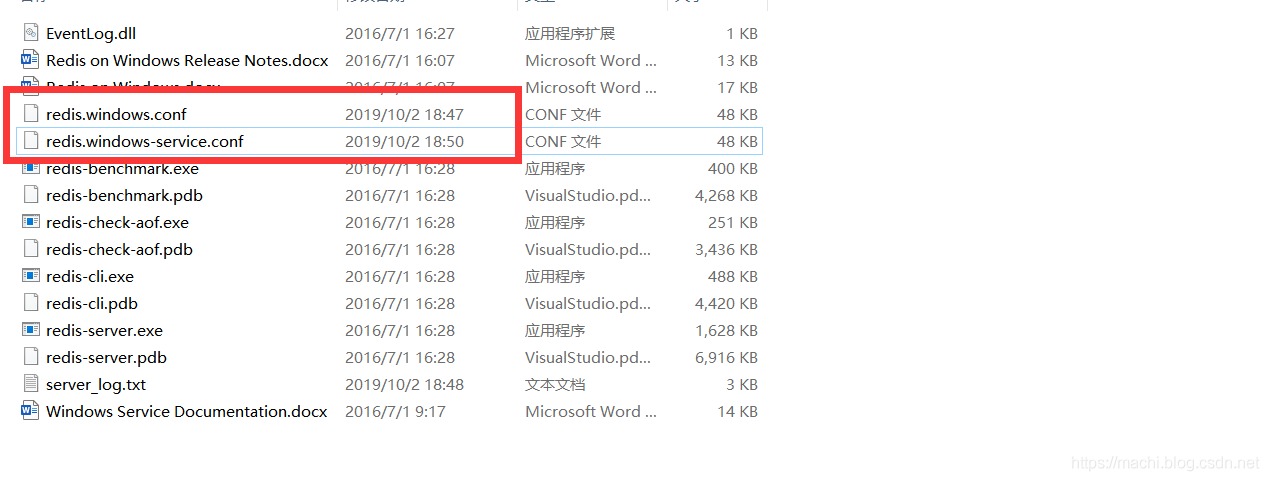

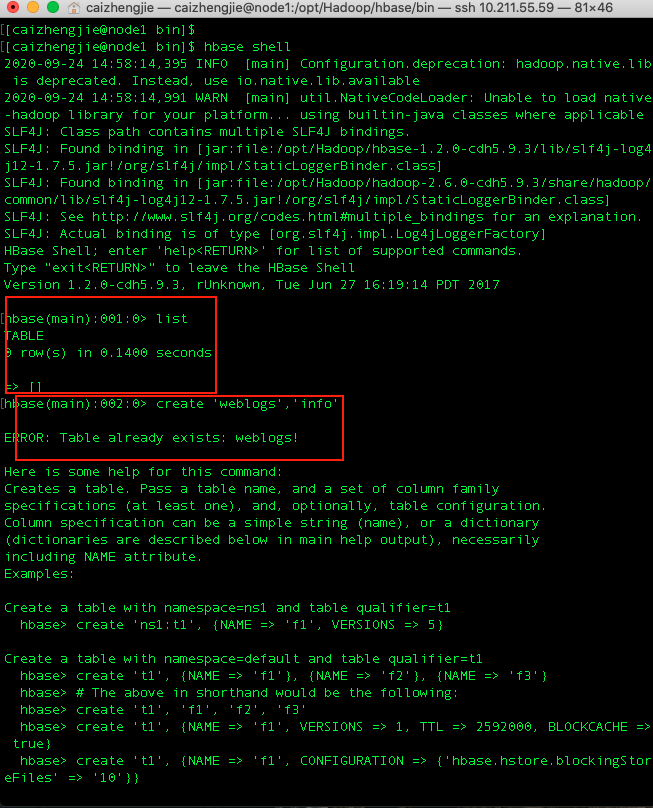



还没有评论,来说两句吧...